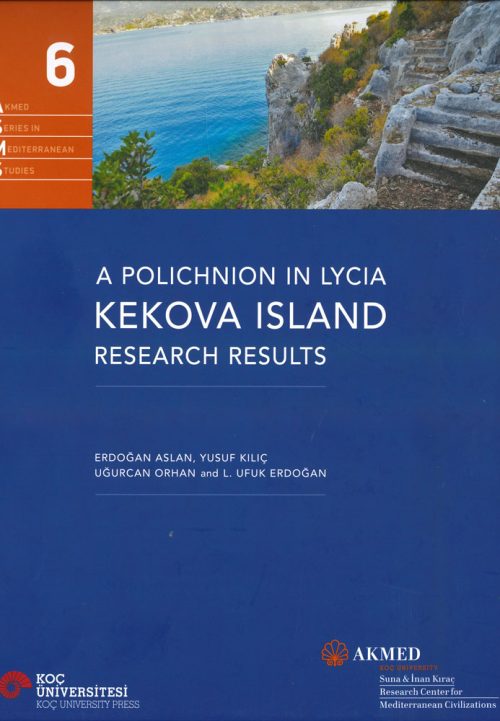
| Authors | Erdoğan Aslan, Yusuf Kılıç, Uğurcan Orhan ve L. Ufuk Erdoğan |
| Type | Book |
| Year of Publication | 2024 |
| ISBN No | 978-625-98205-7-6 |
| Dimensions | 28.5 x 22 cm |
| Pages | xvi + 458 |
| Illustrations | 313 images, 4 plans |
| Language | English |
| Series | ASMS 6 |
The island of Kekova, which gives its name to the region, is located between the districts of Demre and Kaş in today’s Antalya province, situated 1 km offshore from the mainland. Positioned on the ancient Mediterranean maritime trade route, the island is approximately 7 km long and 1.6 km wide.
The island’s rugged and rocky terrain is not suitable for agriculture and significantly limits urban settlement. As a result, there are settlements in only three areas of the island. These settlements, from west to east, are named Tersane Bay Settlement, Northern Settlement (Sunken City), and Lighthouse Settlement.
Kekova Island has not seen modern settlement in recent times. As the region is designated both as an archaeological site and a special environmental protection area, the ancient settlements on the island have been well preserved. Although protected from human damage today, the destructive effects of earthquakes that affected the region in antiquity can still be observed, especially along the coastal areas of the island. As a result, the harbor areas and coastal structures of the ancient coastal settlements in the Kekova region are now submerged about two meters underwater.
The island, which had not previously been the subject of comprehensive scientific research, features coastal-island settlement characteristics across all three settlement units. Documented structures include: a church/monastery, six churches, five chapels, two baths, five fish sauce workshops, five wine/olive oil workshops, 260 residences, two tower farms, 107 cisterns, five lime kilns, three harbors, two anchoring areas, and 13 piers. Underwater research has documented seven shipwreck sites and 45 amphorae of various types.
The structures and finds mentioned above have been categorized under 12 main headings. The island and its shores, which display settlement continuity characteristic of a deme (village) or polikhnion (small town), show a range of architectural styles from the 4th century BCE to the Early Byzantine period. Amphora finds from underwater research represent a broader time range, from the 8th century BCE to the 13th century CE.
